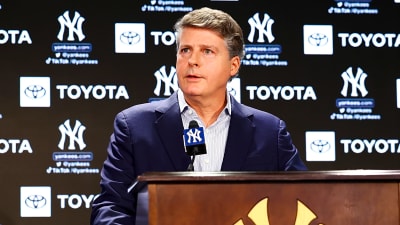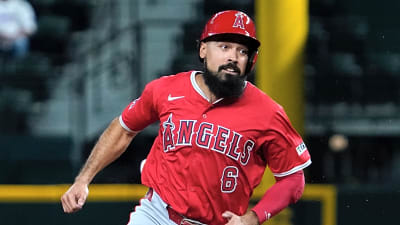
Chad Gable in WWE and Harley Cameron in AEW are disguising themselves (poorly, but that’s the joke) as luchadores. Gable is masquerading as El Grande Americano, and Cameron is parading as Harleygram. We have a rare occasion where both companies are running similar gimmicks of Lucha representation simultaneously.
It’s not the first time US companies have played with the trope of a not-so-mysterious masked man. See Judy Obae’s article on the trope in WWE here.
AEW has also utilized the trope for the purpose of surprise. Before FTR were Las Super Ranas, at the first All In, Chris Jericho attacked Kenny Omega disguised as Penta.
Both have a similar purpose of elevating and spotlighting masked Mexican wrestlers using the star power of the pretenders. Yet, each wrestler and their respective company’s treatment of lucha traditions have evoked differing responses from some viewers.
It’s not as simple as one being good and one being bad. However, don’t expect point scoring. Fundamentally, the prominent positioning and overness of these non-Mexican wrestlers pretending to be luchadores reveals both companies’ weaknesses in presentation and booking luchadores.
Disrespect and Spelling
Plenty are and will be entertained by Chad Gable’s ability to make almost any material work. Who are you to doubt El Grande? In terms of comedy, the idea that the American Made leader hates luchadores, some of whom beat him, disguises himself as the thing he despises most is funny.
Before delving into the political controversy, it’s worth asking if being entertaining and elevating others is the push many wanted for Gable and his stablemates in 2025. Funny can be iconic.
Kurt Angle, whom Gable is often compared to, had many comic moments. Although Angle won consistently and remained a credible world champion/challenger.
Is this gimmick more like Blue Blazer? A storyline that is more a temporary tangent in place of serious wider character development or card escalation.
It feels like this brief run will be to put over a Luchadore. The last laugh might be with a Mexican wrestler, but the choice to get heat linked to world politics isn’t funny for everyone. The reuse of true American hates Mexican, whether a heel or not, feels tone deaf and old hat.
The mimicry and joke also around Americo’s legendary status for some feels disrespectful to their culture. Also lazy, like the use of AI for the character’s introductory video package.
To quote Ernesto Ocompo, Editor-in-Chief of Super Luchas:
“This is an insult on many levels, both to Mexican wrestling and to Mexico itself. They could have left out the ‘Gulf of America’ reference and at least tried to write the character’s name in proper Spanish.”
It’s the lack of thought and consideration that is as much of the issue as anything else. Especially given that, before Americo loses, other luchadores like Dragon Lee are likely to lose.
Beauty and the Beast and Shipping
Harleygram’s budding will they won’t they romance with Beast Mortos relies on tropes also but combines and subverts them. The odd couple beauty and beast trope is blended with the masked wrestler whose identity everyone knows. Like its previous incarnations, the female (now masked) beauty, whose motives are ambiguous, distracts and toys with the beast using her body.
Objectifying? Yes. Done for humour and mocking the male gaze? Also yes.
Harley Cameron’s background in burlesque allows her to play with sexuality for humor in a way she’s clearly comfortable with. Cameron joked on commentary that Harleygram had a “cracking set of knockers”.
Harleygram isn’t playing the evil, manipulative Jezebel manipulating Mortos. Instead, she’s equalizing the threat of LFI.
Its subversion is allowing Beast Mortos, a cult favourite, to show weakness and internal conflict. It’s developing characterisation that contrasts with his mask.
The storyline supports AEW’s already-established lucha scene. By adding a new wrinkle to Hologram and Kommander vs. LFI beyond the in-ring work, it’s giving the feud another wrinkle and more heart. Given how many fans are shipping Mortos and Harleygram, fans are invested.
Yet, that, in itself, does highlight a problem.
The Problem
Ultimately, both gimmicks are working to get masked wrestlers over but the fact that these types of storylines are more infrequent rather than routine presents how both companies don’t book Hispanic wrestlers the same as everyone else. Both companies neglect to book masked luchador wrestlers consistently, if at all, in emotive or personal character-driven storylines. Often, when they do, it involves the use of non-Hispanic talent playing on tropes linked to their masks or heritage.
In response to fan comments on both gimmicks, former LFI corner-man, Jose The Assiant, stated:
“As a Hispanic who worked on TV wrestling I can tell you that these characters are getting OVER as intended to and not an issue anyone should be “offended” by.
There is an issue with how Mexican talent is being used (or lack of) and presented, but that’s another topic.” Jose The Assistant, X.
The Next Rey Mysterio
Since returning to WWE, Andrade’s sporadic is noted weekly on social media. Andrade’s highlights have been a Speed Championship run and an action-orientated feud with Carmelo Hayes. Dragon Lee won NXT gold, but his character and agency, like other members of the former LWO stable, is minimal.
Yes, Penta’s push gives hope for Rey Fenix’s future. Both are marketable and unique and could finally be WWE’s two-for-one answer to the long-term desire for a new Rey Mysterio. However, the lack of consistent attempts and patience in bringing other previous/existing Hispanic wrestlers into significant roles on the card is a problem.
Pigeonholing and Safety Nets
AEW promotes lucha wrestling and its heritage and has now and in the past had Hispanic wrestlers as champions. Bandido and Kommander are two key singles champions for ROH. However, AEW still often pigeonholes Mexican wrestlers.
Borrowing from WCW, AEW holds luchador and cruiserweight-style exhibitions that feature Mexican mask men. While they may compete against other wrestlers, often the outcomes are obvious. Kommander and Beast Mortos both competed in the Continental Classic but were designated pin-eaters.
Hologram’s undefeated streak has yet to see him receive a title shot, let alone a chance in the Owen Hart Cup Tournament. The kayfabe logic gap highlights the care in the young luchador’s booking it’s a safety net. Long-term, as seen with Hook, the lack of risk can translate to little reward.
Even The Lucha Brothers, cornerstones of early AEW, were sometimes hampered by being so good in-ring, and their ability to connect with the audience sometimes was overrelied. Their best and most memorable storylines, feuds and victories revolved around The Elite. Fenix was an AEW triple crown champion.
Yet, both Fenix and Penta, although universally beloved, like Chad Gable, took Ls to elevate others. Over time, that diminished and normalised them, creating an artificial ceiling that hindered their career progression.
Lazy Common Knowledge
There is the argument that luchadores, due to their masks, fast-paced style, lack of selling, and also lack of fluency with English, create barriers to emotional investment and connection with non-Hispanic audiences. While there’s truth to the logic, its perpetual reinforcement by promotional booking practices and tropes that emphasise the mask men’s strengths. Equally, the failure to address weaknesses through coaching or new/different creative ideas changes nothing.
The easiest solution: build characters to accompany the masks.
More must-reads:
- Andy Reid’s main flaw will cost Chiefs a trip to the playoffs
- Takeaways from Black Friday's biggest college football games: Texas A&M loses chance at SEC championship
- The 'Five game-winning-drives in a season' quiz
Breaking News
Trending News
Customize Your Newsletter
 +
+
Get the latest news and rumors, customized to your favorite sports and teams. Emailed daily. Always free!








